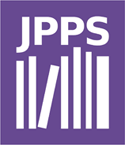Journals assessed against the JPPS criteria are given one of six levels: inactive title; new title; no stars; one star; two stars; and three stars.
The criteria developed for the JPPS framework were compiled by looking at the inclusion standards set out by international journal indices and relevant organizations’ publishing and editorial guidelines. To ensure relevance to journals publishing from developing countries, INASP and AJOL compiled the framework on the basis of decades of experience of contexts, norms and practices in developing country journal publishing, and also on feedback from journal editors in Africa.
The inclusion criteria and standards set out by the Directory of Open Access Journals (DOAJ) from March 2014, SciELO South Africa, Clarivate (formerly Thomson Reuters), Scopus, the World Association of Medical Editors (WAME), the Forum of African Medical Editors (FAME) Editorial Guidelines, and the Committee on Publishing Ethics (COPE) Principles of Transparency and Best Practice in Scholarly Publishing were used as part of the development of the framework. The new JPPS criteria have been developed this way to aid comparison and interoperability of the frameworks internationally, as well as making sure they are attainable and relevant for journals from the South.
The assessor’s internal JPPS report for each journal verifies all the criteria implemented by the journal, as well as whether compulsory criteria (defined for each level) are being attained.
Criteria that journals are assessed against include:
- Publication of original research
- A functional or well-working editorial board, with members who have been verified as being actively involved with the journal by an assessor; and the majority of whom are based primarily in the area served by each JOL
- Accurate and verified involvement of the editorial board, advisory board and any other committees associated with the journal
- Verification and assessment of an active and accurate description of the peer-review process and quality-control processes, including journal plagiarism checks
- Availability of authors’ guidelines, and how well these are implemented, particularly with regard to the information appearing on the first page of each article, and quality of language and layout
- Reviewers’ guidelines
- The display of editorial and publishing policies
Part of the assessment process includes an evaluation of whether an Open Access journal might appear to be a fake, or so-called predatory, Open Access journal. If journals appear problematic to the assessor, the report to the journal will enquire whether they are aware of the problems and what their response has been. If the assessor is not satisfied that the issues have been resolved then the journal will not be awarded any JPPS stars.
Inclusion on internationally recognized journal lists is not a requirement nor a guarantee of a journal gaining a particular JPPS star level but this inclusion is noted as part of the assessment. Claims of fake impact factors on journal websites are researched within the JPPS assessment process; it is disadvantageous for a journal to claim inclusion in these fake metrics measures.
In the interests of consistency and impartiality, the initial assessments for all actively publishing journals in each JOL have been conducted by an expert in developing country publishing who is based in the UK.
Outputs of the JPPS process
Assessment outputs include:
- An assessment record for each journal to be kept by the JOL
- A report sent to the journal editor on any areas of the journal that need improvement, emphasizing those criteria that need to be met to qualify for a higher level
- A display of the JPPS level for each journal on the JOL website, with a link to a document explaining what that means in terms of the publishing practices and standards that are actually being achieved by the journal at the time of assessment.
Six months to a year after initial assessment, journals will be allowed to apply for re-assessment and to provide verifiable evidence that they are by then attaining the criteria recommended for being assigned a higher JPPS level.
PLEASE NOTE: the JPPS assessment DOES NOT assess the quality of the research content, but rather the publishing and editorial practices of the journal itself.
Official JPPS levels are only provided by AJOL and INASP. If in doubt about a JPPS claim, please check the journal’s listing via the JPPS webpage (www.journalquality.info) or an official JOL site.

